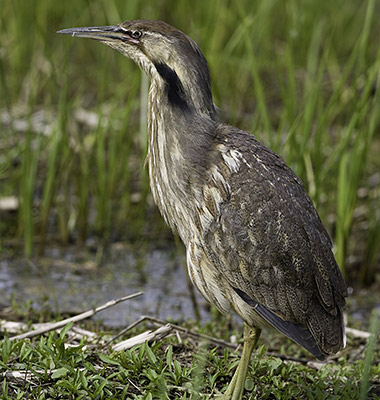Be Informed
Sign up for Sépaq emails to be the first to find out about our promotions, news and special offers.
Having extensive knowledge of the parks to better preserve them is the foundation that justifies the efforts invested in inventories, monitoring programs and scientific research. Below are the main research topics at Parc national des Iles-de-Boucherville:
Every year, we also conduct other monitoring projects and inventories. Among them are monitoring the nesting of birds of prey and the Green-backed Heron, monitoring the beaver, and inventorying avifauna in areas of interest.
Find out more about scientific research in the Québec's National Parks network
Since 2004, as part of the Québec Marsh Monitoring Program (Bird Studies Canada), we have been taking an annual inventory of the birds in the park’s large marsh.

An American Bittern
Photo credit: Claude Lafond
Each inventory is done through the study of four semi-circular sampling stations of 100 m in radius on the edge of the marsh. At each of these stations, all the birds seen or heard in a 10-minute period are counted. Each station is surveyed twice per season between May 27 and July 12. Since the beginning of the monitoring program, we have observed or heard approximately 63 different bird species. Keep an eye on our schedule, because we offer visitors the chance to participate in these surveys.
Sign up for Sépaq emails to be the first to find out about our promotions, news and special offers.